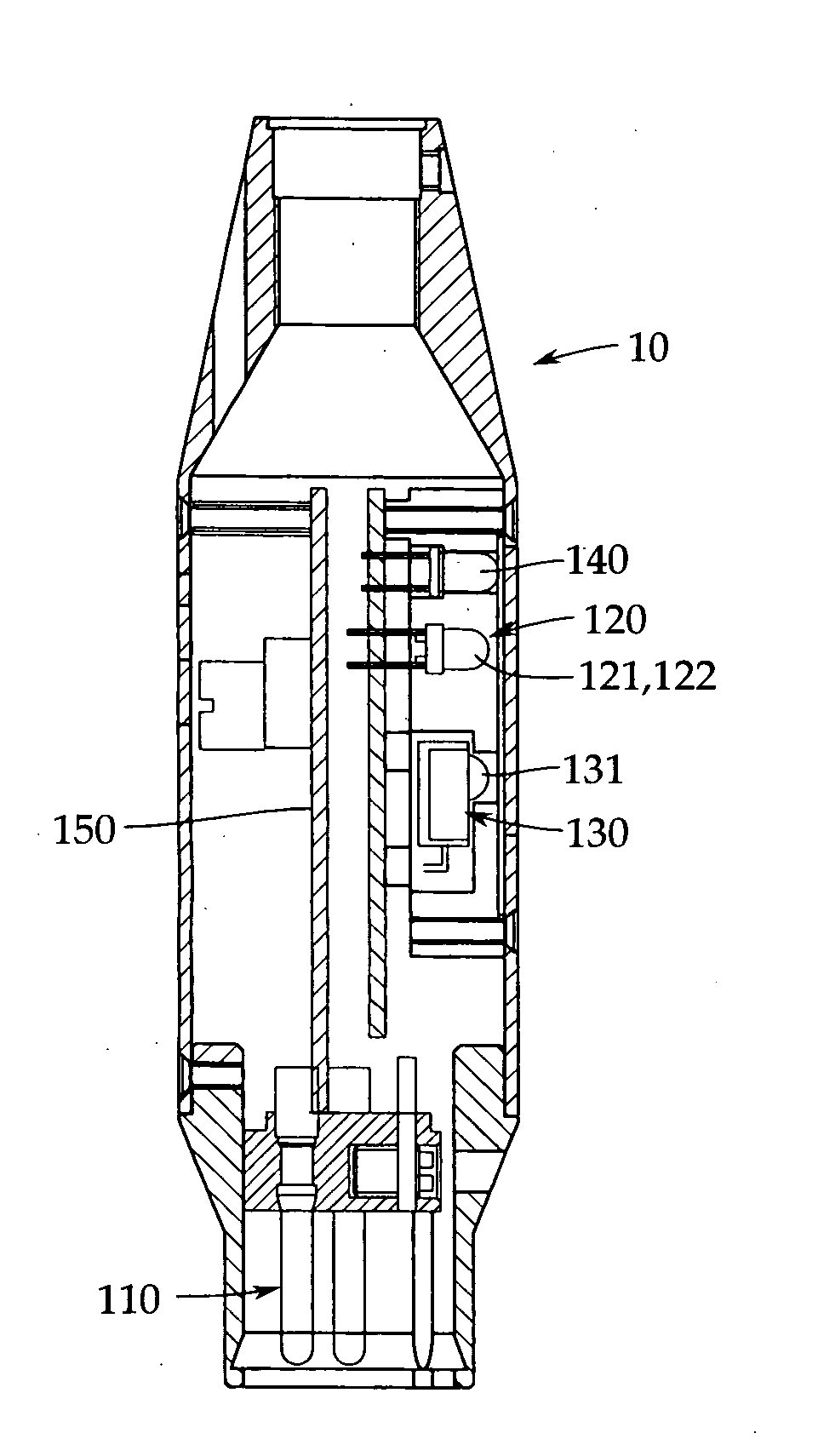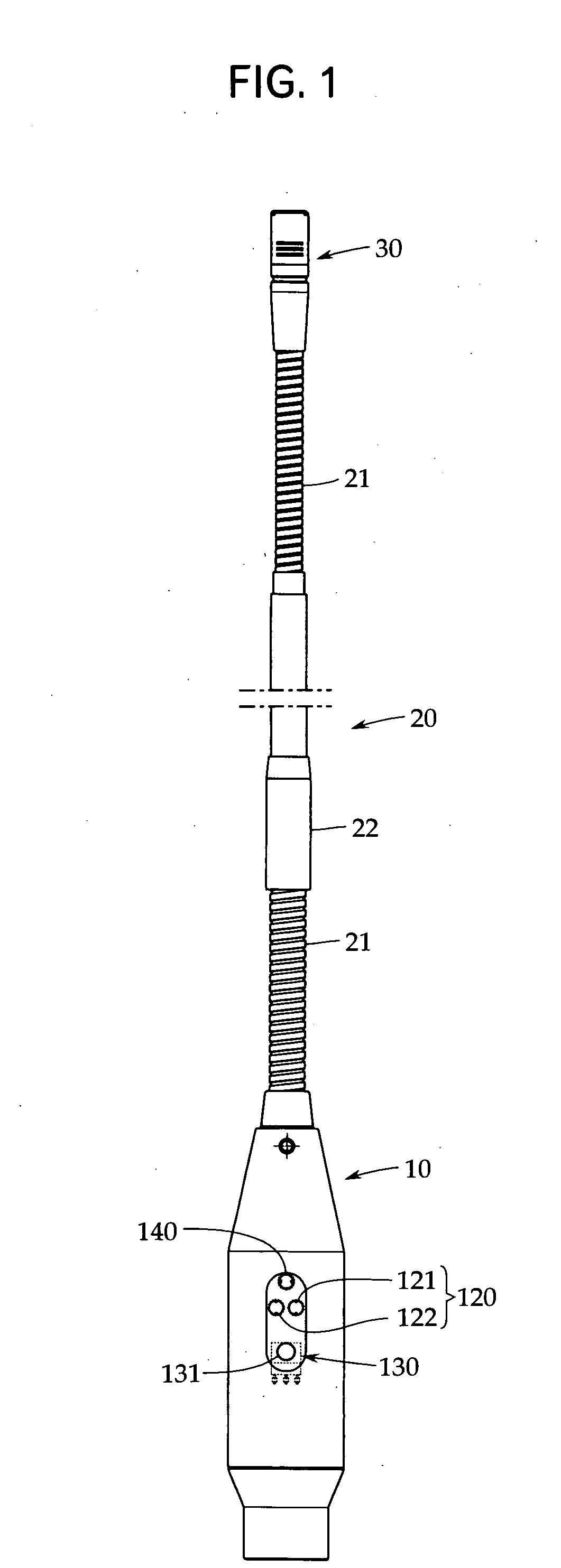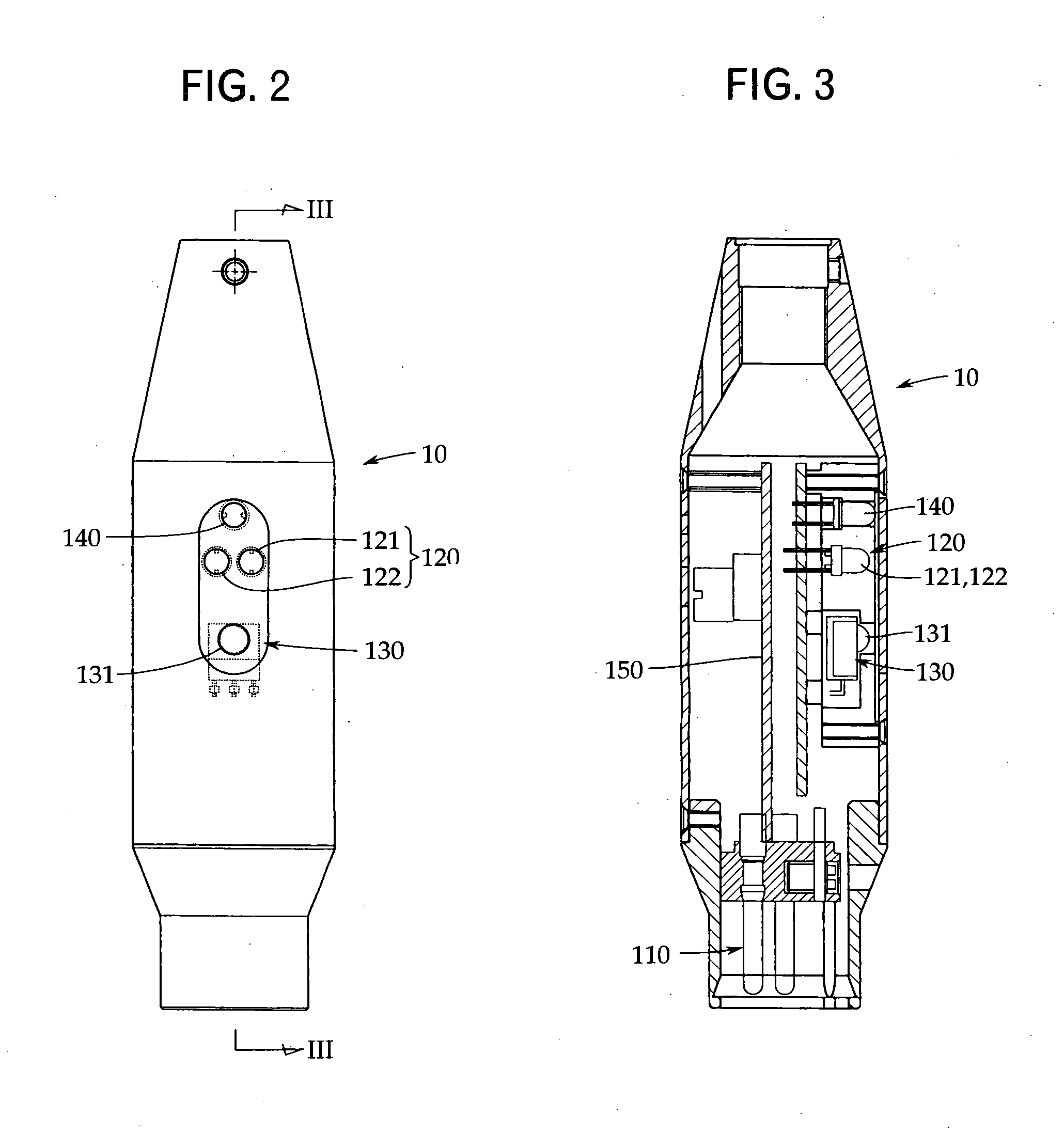Microphone
- Summary
- Abstract
- Description
- Claims
- Application Information
AI Technical Summary
Benefits of technology
Problems solved by technology
Method used
Image
Examples
Embodiment Construction
[0020] An embodiment of the present invention will be described with reference to FIGS. 1 to 6. However, the present invention is not limited to this.
[0021]FIG. 1 shows the appearance of a microphone according to a preferred aspect of the present invention; the microphone is of a goose neck type. The microphone is assumed to be installed on a base such as a table which is not shown in the drawings. Accordingly, the microphone comprises a cylindrical base housing 10 connected to a predetermined fixture provided on the base. The base housing 10 needs to shield incorporated parts from external electromagnetic waves. Thus, the base housing 10 is preferably made of a metal material such as brass.
[0022] In this example, a lower end of a flexible support shaft 20 is fixed to an upper end of the base housing 10; the support shaft 20 includes a flexible shaft 21 and a nested telescopic pipe 22. The flexible shaft 21 and the nested telescopic pipe 22 are made of metal. The support shaft 20 ...
PUM
 Login to View More
Login to View More Abstract
Description
Claims
Application Information
 Login to View More
Login to View More - R&D
- Intellectual Property
- Life Sciences
- Materials
- Tech Scout
- Unparalleled Data Quality
- Higher Quality Content
- 60% Fewer Hallucinations
Browse by: Latest US Patents, China's latest patents, Technical Efficacy Thesaurus, Application Domain, Technology Topic, Popular Technical Reports.
© 2025 PatSnap. All rights reserved.Legal|Privacy policy|Modern Slavery Act Transparency Statement|Sitemap|About US| Contact US: help@patsnap.com



